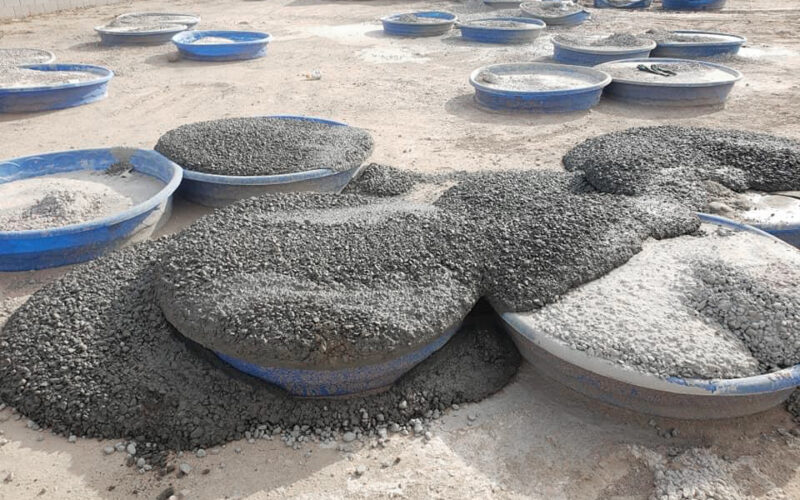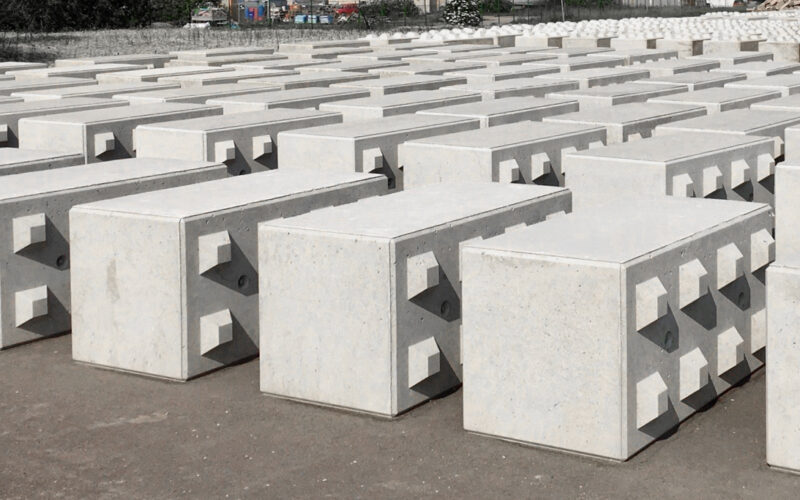Value-added processing of leftover concrete
VALUE-ADDED PROCESSING OF LEFTOVER CONCRETE
After water, concrete is the most widely used substance on earth. Concrete is leading and fundamental in the design and construction of infrastructure – roads, waterways, houses, offices and rock-solid foundations. This is because of the material’s strength, unprecedented longevity and affordability. Concrete is now the most widely used building material on earth, but it also has a huge impact on the environment.
Concrete consists of water, cement, aggregates of sand, gravel and/or crushed stone. Cement is the ingredient that makes concrete such a useful building material. The ingredient cement has a huge carbon footprint, generating about 8% carbon dioxide (CO2) of the global total.
The environmental impact caused by the large amount of CO2 released into the atmosphere during cement production is not its only negative effect. The large-scale use of concrete also depletes the existing reserves of usable sand. Desert sand is present in large quantities but is too smooth and round to use in concrete. The production of concrete also consumes almost 10% of the world’s industrial water resources.
Add to this the transport of the raw materials from the quarry to the cement mill, and the environmental impact becomes undeniable.


A reduction of waste streams (residual concrete) in the production of concrete mortar would have a major positive effect. After all, the negative consequences described earlier would be avoided. Again, think about the CO2 emissions generated in cement production, the amount of water consumed and the amount of usable sand.
Yet there is more. 3-5% of ready-mixed concrete deliveries are rejected or remain unused. Failure to meet specifications and excess concrete amount to a high percentage of wasted material. A disappointment for the sustainable and circular thinking that we would like to see more of. The effects of climate change are becoming more and more noticeable, with the world’s leaders seeing that we are lagging far behind the targets for CO2 reduction. The greenhouse effect is noticeable daily in global events such as hot summers, floods with massive impact, violent storms and sea ice melting worldwide even faster than thought. The time for action is now!
Turning leftover ready mixed concrete directly into a high-quality product that becomes part of a sustainable modular construction system creates a doubly sustainable solution. Especially if the modular building system is part of a standardised construction method that is accepted by the construction industry and has many uses. A building system that is easy to install, modify and remove. The aforementioned features only offer advantages in light of the circular and sustainable future we all strive towards.
As a result, concrete mortar is put to maximum use and used sustainably. Residual concrete is directly reused to produce valuable products. A cost-saving measure that generates more revenue, greatly reduces environmental impact and prevents concrete from ending up in landfills.

THE MODULAR STANDARDISED BUILDING SYSTEM ACCEPTED BY THE CONSTRUCTION INDUSTRY
This standardised building system consists of concrete blocks and concrete slabs that have various applications.
The production of the blocks takes place by using dimensionally stable moulds made of high-quality steel using automated production techniques. Out of the professional reusable moulds come useful building elements with dimensions matching industry standards.
Concrete blocks and concrete slabs can be produced in various sizes and shapes. Choose your block size and select the inserts you want. Thanks to the modular design of the moulds, the widest possible variety of products can be produced with as few parts as possible.
By installing a divider plate, concrete blocks can be produced in quarter, half or three-quarter sizes. This is also possible with stair blocks. The inserts can be installed and removed quickly and easily.
Parts of the mould that wear most quickly, such as the locking mechanism and the mould opener, are hot-dip galvanised to ensure the highest resistance to mechanical damage.


The moulds are robust and easy to transport to and from construction sites, and a welcome addition to standard construction site equipment to avoid the waste of ready-mix concrete.
Modular concrete elements are ideal for constructing retaining walls for dry bulk storage bays, manure or silage pits, site fencing, or crash barriers.
Suitable lifting tools are available for safe placing and moving. A concrete block clamp, lifting yoke equipped with lifting chains and concrete block turner make handling and transporting the heavy concrete elements a piece of cake.
With the tools for processing the ready-mix concrete in the moulds, work sites are fully equipped and have all the means for the sustainable construction of modular standardised concrete structures. Perfect for permanent and temporary structures.

